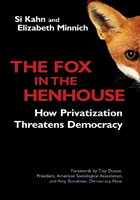Quick. Who comes to mind when you think of male partnerships? We asked ourselves that question and came up with an impressive list of men who have made a sizable impact on the world: hugely successful ice cream entrepreneurs Ben and Jerry; historically revered explorers Lewis and Clark; cultural icons and famed magicians Penn and Teller; mega-hit film producers Bob and Harvey Weinstein; Google co-founders Larry Page and Sergey Brin; DNA discoverers Watson and Crick; Book of Mormon and Southpark creators Matt Stone and Trey Parker, to name just a few.
Now think of female partners. How many can you cite? If you're drawing a blank, you're not alone. Yes, there are plenty of powerful female partners out there-we know that is true after interviewing 125 of them-but none have immediate recognition like the men on the list above.
Figuring we were overlooking the obvious, we turned to Google. Here's who popped up: Lucy and Ethel, the zany duo of 1950s television fame, two best friends who were always scheming (often unsuccessfully, though hilariously) to outwit their husbands; Laverne and Shirley, the Milwaukee beer bottlers, roommates, and sitcom characters who struggled to make it in life and love; Cagney and Lacey, two smart, tough television cops; and Thelma and Louise, movie heroines who, when all roads led to despair, drove their car off a cliff.
When it comes to men working together as partners, there are plenty of accessible, successful, top-of-mind role models. Also, the men on that list are not only well known as individuals, they are recognized as intentional partners as well-that is, men who deliberately decided to work together. What's more, all are or were living, breathing people who have accomplished great things together. And, on the whole, they are recognized more for the successes they've achieved than for their friendships or any interfering personality conflicts.
And that list of women partners? For starters, not one of them is or was a real person-they all lived on television and movie screens-and they are all long gone. Thelma and Louise, the most recent of the batch, had their heyday in 1991. That list of men is loaded with co-leaders who are scientists, technology innovators, entrepreneurs, creative collaborators, and entertainers, but their female counterparts are in an imaginary world. We could not find any professional women partners in visible, intentional collaborations in our online search of cultural icons. And even in the fantasy world, none of the women were known as business partners and certainly not as co-leaders. They were friends, yes, with personality conflicts and mishaps that often took center stage-but partners? Unless you count Cagney and Lacey, far from it. What's wrong with this picture?
The Takeaway
The easy answer is that partnership is a way of working that suits men but not women. However, that's only half the truth. Yes, there's plenty of evidence that partnership works for men. But what we've learned from our research and interviews with female co-leaders in a range of fields is that it definitely works for women as well. From our interviewees-who are collaborating as investment bankers, singer-songwriters, peace mediators, script writers, wholesalers, gallery owners, cupcake bakers, newspaper publishers, and social media whizzes-we heard the same message over and over: partnership is a professional model with the power to make life work more successful and life itself a whole lot saner for women who are ready for a better way.
Maybe that's you. Perhaps you are reading Power Through Partnership because you are ready for new solutions to old problems, are tired of working at full tilt, weary from striving for perfection. With partnership the hard work is still there, of course, but it is accompanied by the steady support of a female colleague who is equally committed to pursuing a vision you share, one that's based on values you both hold. Sound like a pipe dream? It's not when partners are ready, willing, and able to do the communicating, load sharing, and relationship building it takes to create and sustain healthy collaborations.
How Do We Know?
As the co-leaders of The Mulberry Partners, the consulting practice we founded in 2002 that combines our complementary backgrounds in education and organization development, we directly experience the reality that partnership can create. So do the female co-leaders we've interviewed, who are benefitting from the flexibility and support it provides, the confidence it builds, the mutual accountability it encourages, and the equity that is available through it.
The Book We Couldn't Find
With benefits like these, you'd think that female dynamic duos would be an entrepreneurial norm. That's what we thought too when we decided to join forces. We knew we wanted to partner, but we had questions about what it would mean for our decades-long preexisting friendship. We began our partnership aware and wary of the conflict that can brew between women and hinder collaboration. Early in her career, Betsy witnessed the implosions of two sets of female collaborations. In both cases, communication was the first casualty. Partners too busy doing the work to check in with each other made assumptions, trust evaporated quickly, and poorly managed conflict followed. The results were fractured projects, broken businesses, and, what seemed to be most painful of all, damaged relationships. These were scenarios we wanted to avoid, but how? What steps could we take to build a strong, vibrant partnership?
Eager for guidance about how to develop a successful partnership with a healthy relationship at the center, we looked everywhere for relevant advice. We found many books and resources about how to set up partnership agreements, others on the joys of friendship, and still others on the ups and downs faced by female entrepreneurs. But nowhere did we find a guide that spoke to us as women who wanted to combine our professional skills to create a successful entity while making sure we preserved our personal relationship.
In retrospect it's not surprising that we couldn't find resources about professional women's partnerships. Why would these guides exist when this model is barely recognized in the larger culture? Unlike the celebrated list of male collaborators, who inspire new collaborations by serving as visible role models, real-life successful female collaborations are a well-kept secret-unknown and unaddressed.
With only our own experiences and awareness of potential pitfalls and conflicts to guide us, we set out to form a partnership that could work effectively and be personally fulfilling. And after twelve years of co-leadership, we deem our partnership an unqualified success. The benefits have been enormous. Our partnership has consistently worked for us, providing a platform for professional success through a relationship that offers the flexibility, support, and confidence that energizes us. Because of our partnership, we've been able to give each other steady support as we've faced obstacles. We've felt the rare freedom of being our whole selves at work, knowing that we both fully appreciate our strengths and our quirks. We've fueled each other's confidence as we've encouraged each other to take on new challenges. We've had the flexibility of scheduling client meetings and other commitments around our children's school schedules.
We began wondering if we were unusually fortunate or if other women were achieving similar benefits from their collaborations. If so, could partnership be a replicable model more women would benefit from? We decided to find out.
Detective Work: Finding Women Partners
To obtain answers to these questions, we first had to find other women partners. This was no easy task. (You already know what happened when we turned to Google for help with this quest.) We had to hone our detective skills, zeroing in on such clues as "co-founder" and "co-president" in articles about women in leadership. Not once did we discover a female partnership announcing themselves as such.
It took nearly a decade to assemble our list, but eventually we interviewed 125 female co-leaders, who, once found, had plenty to say about the power of their partnerships. Our interviews morphed into long conversations, as women enthusiastically shared their stories. Many confided that they are rarely asked about their collaborations, yet they revealed that these collaborations are often what make their success possible.
These conversations confirmed that partnership is a workable leadership model for women with varying experience in many fields. Whether partners had known each other for a lifetime or hadn't laid eyes on each other until someone else matched them up, our interviewees validated our positive experiences. It was more than just our good fortune. It was a broader phenomenon bringing the enormous benefits of success, satisfaction, and even happiness to many women's lives. The results of our interviews led us to believe that partnership is a model that indeed could be replicable for many additional women.
Needed: New Options
Goodness knows women need better professional options. Experts such as Stephanie Coontz have concluded that the "gender revolution has not hit a stall, it's hit a wall,"[1] and numerous statistics and studies confirm that women's rise toward equity in the workplace has halted. In 2012, Anne-Marie Slaughter's groundbreaking Atlantic article, "Why Women Still Can't Have It All," dispelled the myths that all women really need to do to succeed is to work harder and stay on the career ladder. Arguing that it isn't women who are not succeeding, it's the system that's failing women, Slaughter writes, "I still strongly believe that women can 'have it all' (and that men can too). I believe that we can 'have it all at the same time.' But not today, not with the way America's economy and society are currently structured."[2]
After impressive gains in education parity and a wider presence in a range of once-male-dominated fields, women seem to have gone as far as they can go as leaders until changes are made to this structure, the very fabric of our culture. Entrenched social, cultural, and governmental structural impediments are holding women back. Disparities in health care; gaps in equal pay; limited (and unpaid) family leave; lack of affordable, high-quality options for child and elder care-to name only a few-push back against women at all levels of work. And while there are individual exceptions, such as the twenty-six female CEOs of the top 500 companies[3] and the 3.3 percent of corporate board chairs who are female,[4] too many barriers still work against women in general to prevent them from making it into top leadership in large numbers.
Take the portrait Frank Bruni painted of his hardworking, multitasking sister in his New York Times column "Women's Unequal Lot." A look at her life compared to his leaves Bruni stunned. He has one job; she has three or four. In addition to her paid work in an executive recruiting firm, she spends "many hours daily as a combined chauffeur, drill sergeant, cheerleader and emotional nursemaid for her two children and two stepchildren." And she serves on her local board of education. Oh yeah, and she's hosting Easter dinner for the whole extended family. We couldn't help but think of our sisters, mothers, and friends, nodding with recognition as Bruni summed up the reality, "Being at the helm would probably push my sister over the edge."[5]
Frank Bruni's sister, like countless other women, needs new options and real solutions. That's where partnership comes in. It is an option and real solution that men have long been leveraging. Look at the successful models listed at the beginning of this book. These men have tapped into the power that grows from partnership. They've made the most of the extra strength that results from the transition from one leader to multiple leaders, who can create a more forceful presence. We keep thinking about a picture we saw of the all-male Twitter co-founders who were standing together on the floor of the New York Stock Exchange after Twitter's initial public offering. There they stood amidst the chaos, the epitome of success-confident, assured, and powerful. They took up space. Their declaration seemed to be We are here, we are important, and we are making an impact.[6]
The same needs to be true for women. Although female partners are not now as visible (something we're here to change), they do have an impact in their respective fields and greater equity because of their collective force.
Not a One-Size-Fits-All Solution
We know that partnership is not for everyone. Sharing leadership doesn't always work, even with the right partner, the right timing, and all the benefits. And many women are successful and content working alone, preferring to lead on their own. Some women may prefer not to invest in the levels of commitment and relationship maintenance required to make partnership work. We know we cannot change that, nor do we want to. But we do see that this model of female partnership applies to intentional, ongoing collaborations as well as to situational, short-term opportunities to lead together. Whatever the extent of the collaboration-from co-leading a business to spearheading a short-term project-it will be enhanced when women enter the situation with myths debunked, eyes wide open, and with communication and conflict-resolution skills at the ready.
The Next Step
Once upon a time we took our friendship and started a business without any idea about what we were getting into. When we didn't find the resources we needed, we reached out and found 125 female partner mentors and role models to guide, inspire, and encourage us to keep at it. Through the example of these trail-blazing women, we have been assured that the benefits of partnership are strong, palpable, and well within reach, and that the challenges are conquerable because we have each other. These partners who have shared so generously of their time and wisdom are the ones to replace the outdated, make-believe partners of old.
After all, who needs Lucy and Ethel when Heather White and Lori Joyce are leading bakeries in Canada and starring in their own reality show, The Cupcake Girls? Who needs Cagney and Lacey when Marcia Greenberger and Nancy Duff Campbell of the National Women's Law Center are setting policies that combat the structural impediments that work against women? And who needs Thelma and Louise when Valerie Batts and Angela Bryant, co-founders of VISIONS, Inc., are teaching CEOs across the globe how to dismantle gender biases and racism in order to gain true equity?
We wrote Power Through Partnership for women because, quite simply, no other resources available now carry this message for women. Sure, plenty of valuable sources make the case that life is tough-exhorting women to "lean in," to stop trying to be Wonder Woman, or to let go of being overwhelmed. But how are women supposed to do that? Concrete ideas and solutions are needed. Partnership is a practical professional model that works well for too many women to be buried. Men have been partnering for a long time, guided by lists of accessible models for help and inspiration. It's time for the same assistance to be available to women.
It's our mission to place the model of women's partnership front and center as a practical, accessible, effective solution. This book is for women who are ready for a better way to lead, to work, to live. Is that you? It has certainly been us. This is the guidebook we never had, here to help you navigate as you experience the benefits, face down the obstacles, debunk the myths, and strengthen the communication and conflict tools you're going to need for the rich and winding partnership road ahead.














